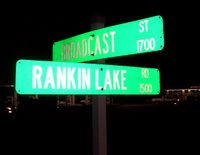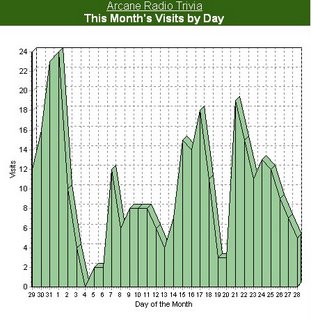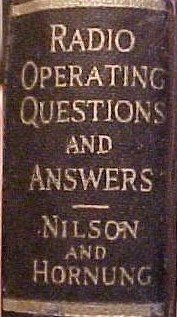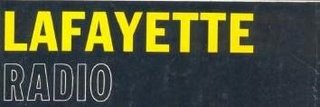
Irna Phillips earned the title “Queen of the Soap Operas.”
Born in Chicago in 1901, youngest of ten children, legend has it that Phillips endured her poverty-stricken, lonely childhood by reading and concocting elaborate lives for her dolls. In college she tried her hand at acting. But as they say (those that can, do. Those that can't...)
So she turned to teaching. After graduation, she taught in Missouri and Ohio for several years before returning to Chicago. She fell into a job at There she fumbled her way into a job at
WGN doing voice-over. She got lucky and after a few months she was asked her to write a daily program "about a family."
That program became "Painted Dreams" and debuted in October 1930. It has since been recognized as the radio's first soap opera. Phillips wrote and perfromed in the program until 1932 when she left
WGN over an ownership dispute. It was a big fight, She wanted WGN to get the program syndicated. Topted not to. It was a power struggle. The ability of the program to seell product was proven. Apparently her boss found her threatening... When they refused Phillips took them to court claiming the show as her own property. Terms of the dispute were settled and sealed... (When Painted Dreams emerged from the courts and was purchased by CBS. )
She crossed the street to
WMAQ. There she created "Today's Children" which aired for seven years, and was massive hit on NBC radio ...because
WMAQ was ready to syndicate from mthe get go! At
WMAQ making money mattered more than personal crap. [
somebody at WGN wasn't confident enough in their masculinity] It was followed by a strong of other successfull radio dramas: The Guiding Light in 1937, The Road of Life in 1938, The Right to Happiness in 1939.
She had to give up acting to full-time radio wirting. She had also sold the shows to national networks. She got famous. In 1949 Phillips created the first serial broadcast on a major television network, These Are My Children. The show, tanked. It ran on NBC for only a month.
Phillips returned to TV in 1952 with The Guiding Light in 1952, with The Brighter Day following in 1954. These shows did great. She had learned how to write for the new media. The Guiding Light (later shortened to Guiding Light)
remains on the air to this day, making it the longest running program in broadcast history.However, she has long been known as "hard to work with"
-Phillips fired lead actress Helen Wagner because Phillips said she did not like the way she poured coffee.
-Phillips also fired actor John Beal from Another World one episode because she "didn't like the way he looked
-She demanded her actors, even the stars never go by their real names in public.
-She has also been rumored to have driven some of her stars into thearapy and nevervous breakdowns.
...she's also been called a raving bitch... but she made history but so has synvia Rhone. When a woman makes history in a man's world maybe they need to push a little hard. She retired from soaps completely in 1973 and died later that year. Ever the control freak, Irna had requested that her family not write an obituary upon her death
Recollections of Irna in her final months can be found in Harding Lemay's 1980 memoir, Eight Years in Another World.
 We've all driven on, or past radio Avenue, or Radio Drive. There are easily a hundred streets named "Transmitter" Road. They're usually tucked up in the hills, right below the tower farm, but it's a real road. What is less common is the naming of an entire town after radio. This has happened only four times in the United States.
We've all driven on, or past radio Avenue, or Radio Drive. There are easily a hundred streets named "Transmitter" Road. They're usually tucked up in the hills, right below the tower farm, but it's a real road. What is less common is the naming of an entire town after radio. This has happened only four times in the United States.




 In Philadelphia, WSNI despite a very stable and respectable book, (averaging a 2.8) they dropped Soft AC and went Tropical last week. Philadelphia is one of few top 20 cities that do not have a latin-focused FM so the change was not entirely unexpected. Philly has a big latino population, but it's 2 generations or more old and very americanized. The decision to go Tropical is a long term decision in this city. WEMG-AM has been running a similar tropical format for years and they haven't had much better than a one share in years. The bet is that WSNI will steal 50% or more of it's listeners from WEMG-AM and then also gain new listener. (If all other things are equal, an FM will outperfrom an AM.) WSNI probably will recover quickly and be back to a 2.5 share by xmas. But is our hispanic population big enough to support two latin outlets? No. WEMG will go Spanish Oldies, Reg Mex. or pick up the Air America programming that didnt' work out on WHAT-AM. (I'm hoping for the libs of course)
In Philadelphia, WSNI despite a very stable and respectable book, (averaging a 2.8) they dropped Soft AC and went Tropical last week. Philadelphia is one of few top 20 cities that do not have a latin-focused FM so the change was not entirely unexpected. Philly has a big latino population, but it's 2 generations or more old and very americanized. The decision to go Tropical is a long term decision in this city. WEMG-AM has been running a similar tropical format for years and they haven't had much better than a one share in years. The bet is that WSNI will steal 50% or more of it's listeners from WEMG-AM and then also gain new listener. (If all other things are equal, an FM will outperfrom an AM.) WSNI probably will recover quickly and be back to a 2.5 share by xmas. But is our hispanic population big enough to support two latin outlets? No. WEMG will go Spanish Oldies, Reg Mex. or pick up the Air America programming that didnt' work out on WHAT-AM. (I'm hoping for the libs of course)














